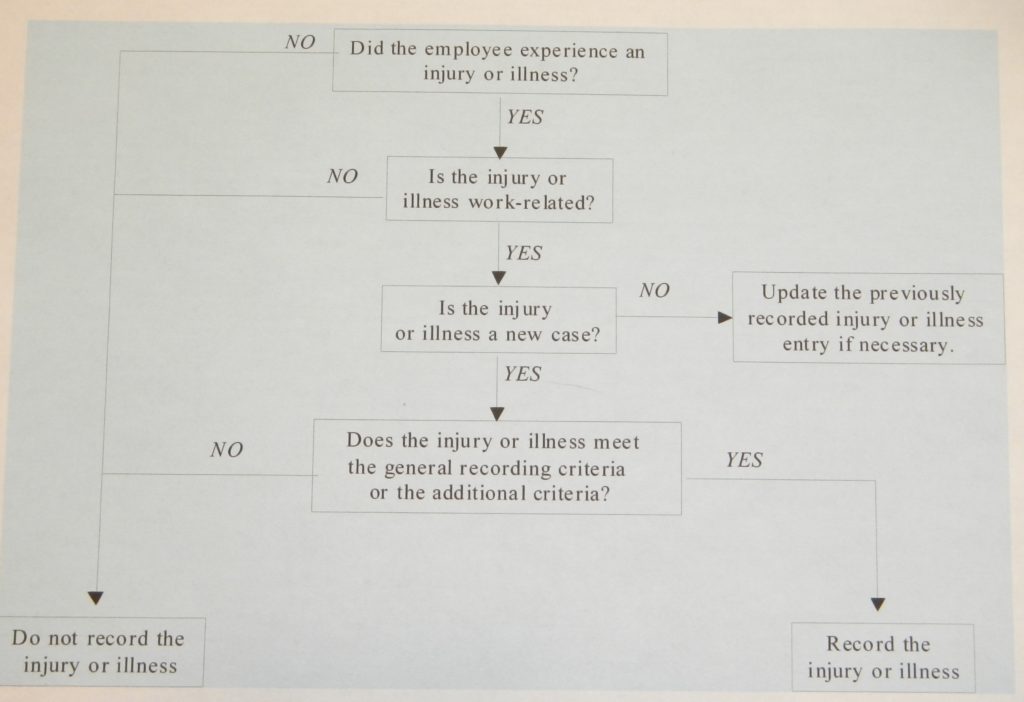Recording and Reporting Occupational Injuries and Illnesses
Though documenting occupational injuries and illness has been required for many years,
OSHA [Fed] new [2017] change in how the data was to be transmitted to the government has caused some concerns and quite a bit of traffic on safety blogs.
The new [2017] mandate is that employers must submit the Form 300A electronically. OSHA has created an on-line portal [ITA website] for employers to comply (upload the forms).
Sounds simple enough, right?
The issue is Cal/OSHA. The changes the Fed’s made, placed the Division of Industrial
Relations [Cal/OSHA] in a position to modify § 14300.40. Providing Records to Government Representatives, to reflect a similar requirement.
And though Division of Industrial Relations [Cal/OSHA] had nearly two years to create a portal and modify the standard, they failed to do so in a timely fashion, hence the “emergency ruling”.
On October 18, 2018, Cal/OSHA issued an amended notice of proposed emergency action to amend sections 14300.35 and 14300.41 of title 8 of the California Code of Regulations. The purpose of the amendments is to conform California’s recordkeeping requirements to the federal OSHA program. The proposed regulatory language and Finding of Emergency are posted at https://www.dir.ca.gov/dosh/doshreg/Recording-and-Reporting/.
On November 1, 2018, the [CA] Office of Administrative Law approved the emergency action. This means that the employers in California described below are now required to submit Form 300A data covering calendar year 2017 by December 31, 2018. Employers should follow the instructions posted at federal OSHA’s ITA website
The ITA Website is: https://www.osha.gov/injuryreporting/index.html You may also go to the Occupational Safety and Health Administration (OSHA) website and select the Injury Reporting page.
The bottom line is not much has changed other than the employer must use the ITA websiteto upload the 300 Logs. The deadline this year is December 31st 2018, future deadlines will be March annually. Beginning in 2019, the reporting deadline would be March 2 of the year after the calendar year covered by the form(s).
So, “who” (which) employers must report? OSHA’s website has this posted: Who:
Establishments with 250 or more employees that are currently required to keep OSHA injury and illness records, and establishments with 20-249 employees that are classified in certain industries with historically high rates of occupational injuries and illnesses.
Though 300 Log citation are often issued as a GENERAL citation, with a small fine of $500.00 dollars or less, they can easily be avoided by simply completing the document correctly. For your review and consideration, please see the following examples of citation issued for OSHA 300 logs:
T8 CCR §14300.32(a)(1)
(a) Basic requirement. At the end of each calendar year, you must: (1) Review the Cal/OSHA Form 300 to verify that the entries are complete and accurate, and correct any deficiencies identified
AVD
At and prior to the time of inspection, the Employer did not effectively review the Form 300 at the end of the calendar year. It was deficient and not complete. For several cases the number of days the injured or ill worker was either on the job transfer or restriction and/or away from work was not recorded. In another case the employer did not classify the case and a description of the injury or illness, parts of the body affected, and object/substance that directly injured or made the person ill was not completed.
T8 CCR §14300.1(a)(2)
(a) Basic requirement. (2) If your company had more than ten (10) employees at any time during the last calendar year, you must keep Cal/OSHA injury and illness records unless your establishment is classified as a partially exempt industry under Section 14300.2.
AVD
At and prior to the time of the inspection, the employer had more than 10 employees, was not classified as a partially exempt industry, and did not keep the following Cal/OSHA injury and illness records or their equivalents:
(1) Cal/OSHA Form 300 (Log of Work-Related Injuries and Illnesses)
(2) Cal/OSHA Form 300A (Summary of Work-Related Injuries and Illnesses)
T8 CCR §14300.32. Annual Summary.
(b) Implementation.
(3) How do I certify the annual summary?
A company executive must certify that he or she has examined the Cal/OSHA Form 300 and that he or she reasonably believes, based on his or her knowledge of the process by which the information was recorded, that the annual summary is correct and complete.
AVD
At and prior to the time of the inspection, the employer failed to have a company executive certify that he or she has examined the Cal/OSHA Form 300 and that he or she reasonably believes, based on his or her knowledge of the process by which the information was recorded, that the annual summary is correct and complete. The Cal/OSHA Form 300 had been signed by the office manager, the office manager is salary employee not a company executive.
For Cal/OSHA OSHA Log FAQ’s please see
https://www.dir.ca.gov/dosh/etools/recordkeeping/faq/FAQs.htm
OSHA 300 Log criteria
Aside for “reporting” please keep in mind the “posting rules” have not changed.
Posting Requirements
The OSHA 300 Log posting is an annual requirement. The OSHA 300 Log must be “posted” in an area commonly accessible by employees from February 1st to April 30th annually.
Throughout the remainder of the year, the (current) OSHA 300 Log must be available for review (by Cal/OSHA) within 4 hours (of the opening of an inspection). Additionally, as part of the record keeping requirements, employers are required to keep the OSHA 300 Logs available for review for the past 5 years.
Note: READ the directions on the OSHA 300 Log forms. The information on how to complete the form is simple and straight forward.


